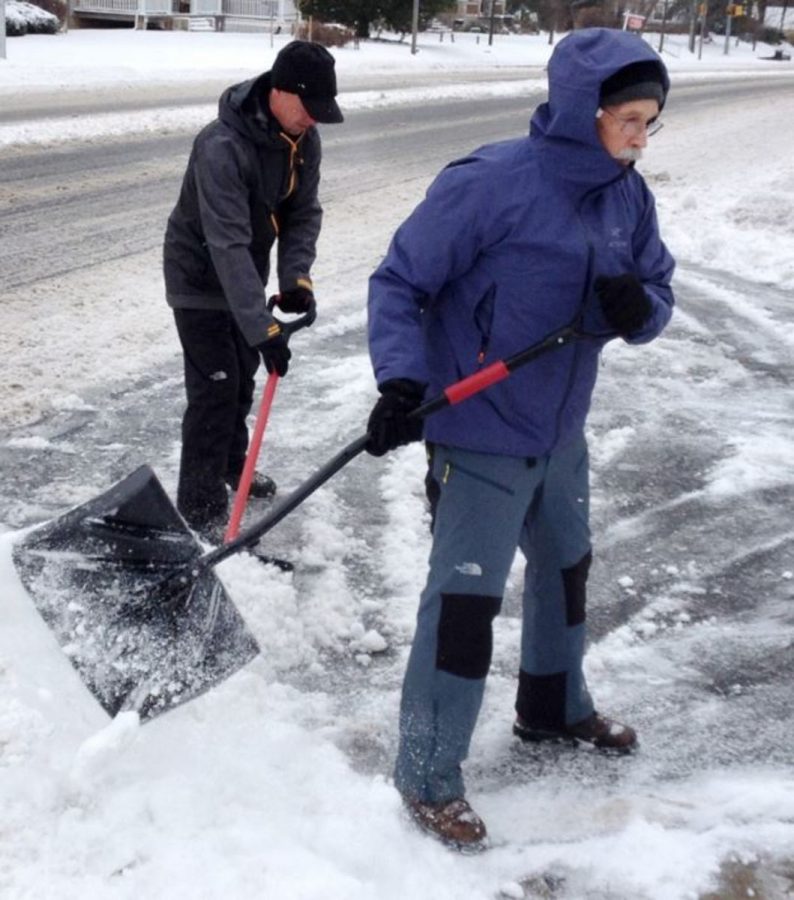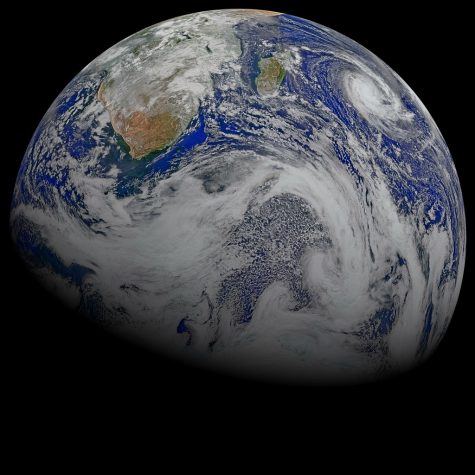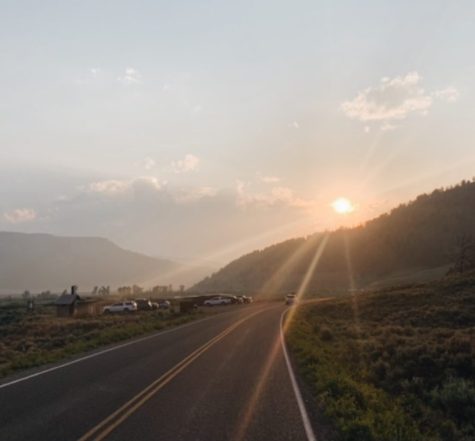Ice-melting salt dumps negatively affects environment
SALT. A neighborhood friend reacts to the snow. Although this is not the most environmentally friendly way to clear the sidewalk, it gets the job done. The challenge to find better methods has been increasingly emphasized, and the right to a safe drive or walk is most definitely not being forfeited. Photo by: MCT Photo
A shocking 22 million tons of this are poured over streets each year, over 137 pounds person. What is it? Surprisingly, it is salt.
Think of how your tongue feels when you eat just a bit too much salt, then imagine the amount of road salt that fills the roads in the wintertime. The roads and environment feel similar to your tongue, but much worse.
“I never before thought about how bad the salt we dump on roads could be for the environment, but now I definitely see how it could be,” said Keren Idelman, 11.
In fact, when all the snow melts, all we see is a disappearing act, but the salt actually ends up in our water systems.
In drinking water, the salt content increases slightly, but outside of that, the salt content completely changes our backyard ecosystems, so much so that Canada categorized road salt as a toxin in 2004.
“Even if we do not see the effects of our actions ourselves, it does not mean they are not there. We must be conscientious so not to harm our mother earth,” Idelman said.
Approximately 40 percent of the United States’ urban streams’ chloride levels are much higher than the safety guidelines for aquatic life due to the use of road salt, impacting the survival rates of animals like frogs, salamanders, fish and plants.
“If there is any other way to keep roads safe as well as protect wildlife and ecosystems, I think we should utilize it,” Idelman said.
Thankfully, there are a few ways to reduce the negative impact of road salt.
Salting before rather than after a storm as well as blending in small amounts of water, sand, gravel or de-icing compounds are all options to improve the safety of not only human life, but also aquatic life.











